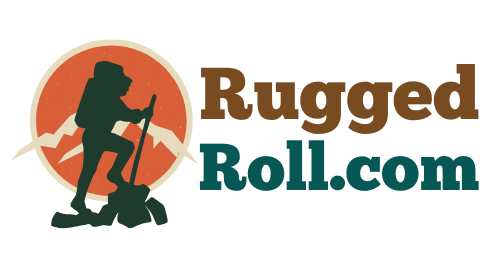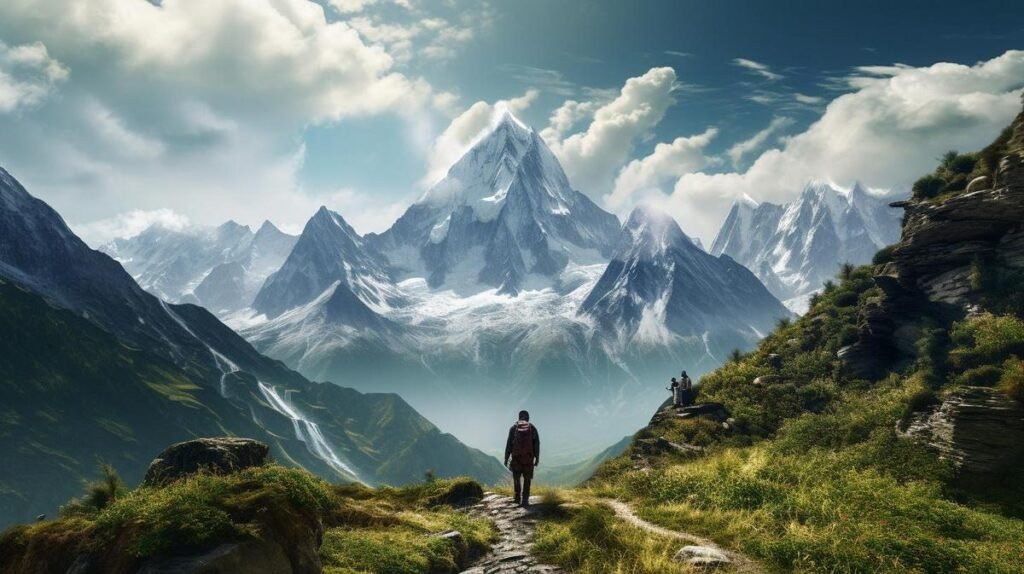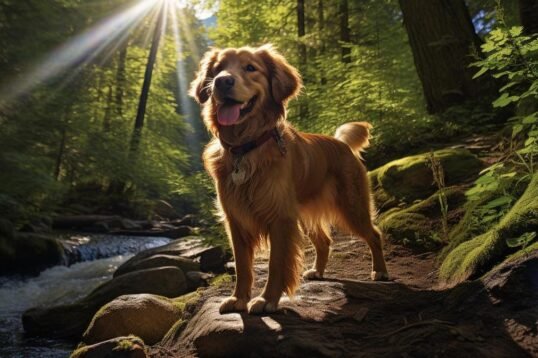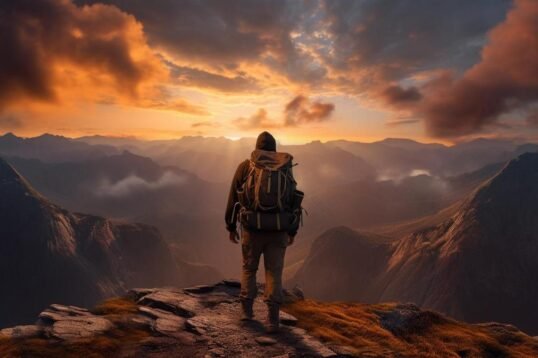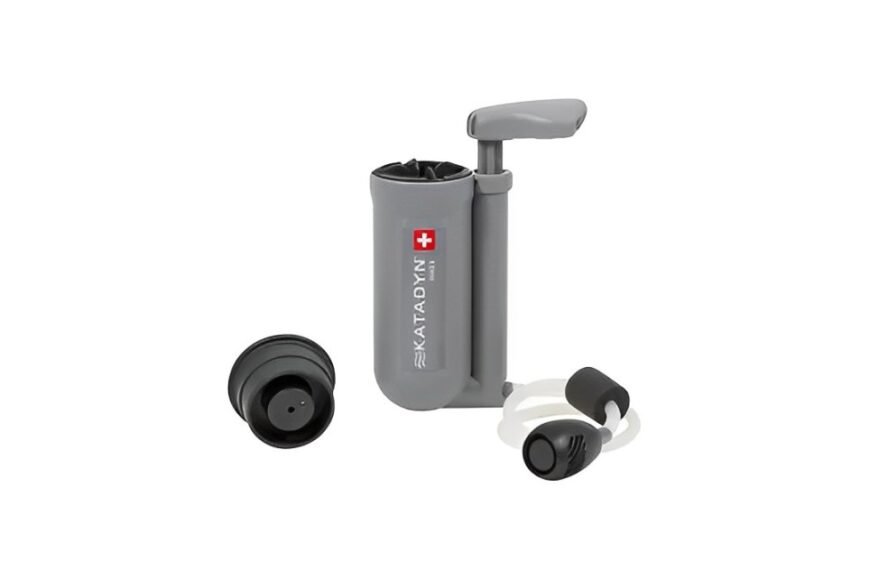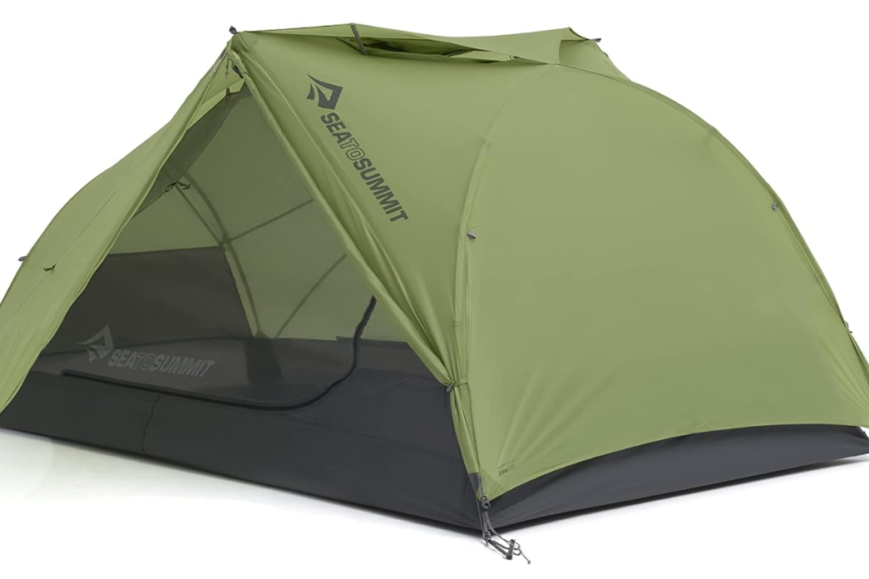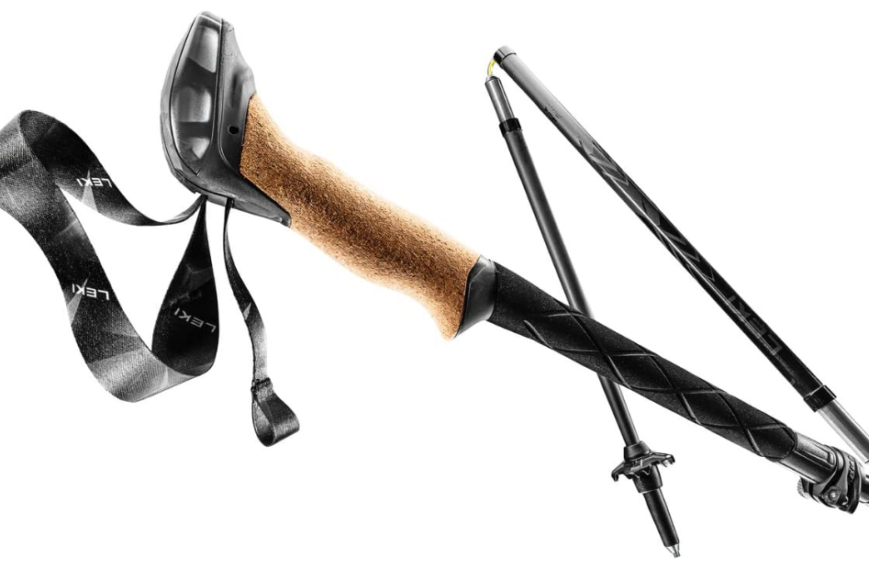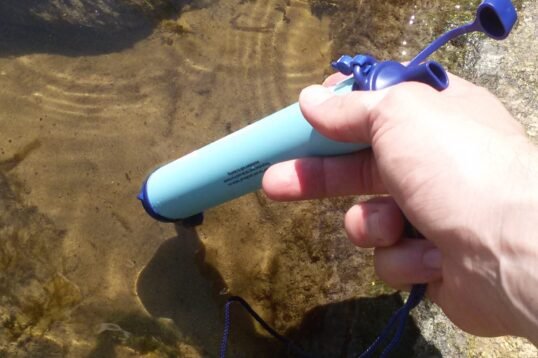- Solo hikers should pack essential gear: map, compass, sun protection, extra clothing, headlamp, first aid, fire starter, repair tools, extra food/water, and an emergency shelter.
- Choose lightweight, strong tents; waterproof, grippy footwear according to terrain.
- Plan simple, high-energy, nutritious meals with non-perishables; carry water and purification methods.
- Carry a whistle, bear spray for safety; know first aid, and inform someone of your hiking plan.
- Connect with solo hiking communities for shared experiences and tips.
- Mental prep includes knowing your skills, setting a positive mindset, and gradual confidence-building.
- Start on well-known, safe, beginner-friendly trails; use online resources for research.
- Carry personal locator beacons for emergencies, especially for solo female hikers.
- Tents, waterproof boots, satellite communication devices, and GPS tech are recommended gear.
- Evaluate wilderness first aid and emergency knowledge; carry a fitting first aid kit, stay calm, think, and act accordingly.
- Solo hikers enjoy emotional benefits like peace, self-reflection, and challenges.
Stepping out into the wild alone? Mastering solo hikes means packing smart. Before you hit the trail, knowing the must-haves can make or break your adventure. My goal? Get you geared up with the right stuff. From choosing a tent that won’t weigh you down to selecting boots that keep your feet dry, I’ve got the essentials covered. Ready to pack? Let’s dive into the critical items every solo wanderer needs.
What Are the Essentials for Solo Hiking?
What is a solo hiker? A solo hiker is someone who hikes alone. To be one, choose trails matching your skill, plan well, and always stay safe. Bring items that keep you safe and healthy on your solo hike.
Pack these core items: a map and compass, sun protection like hats and sunscreen, extra clothing to keep warm, and a headlamp or flashlight. Don’t forget first aid supplies, a fire starter like matches, repair tools, and extra food and water. An emergency shelter is also key, just in case.
What lightweight tents for solo hikers are best? Choose one that’s light but strong. It should keep bad weather out and be easy to set up by yourself.
For footwear, get waterproof hiking boots or shoes that suit where you’re hiking. If your path is rocky, go for good traction. Is it often wet? Pick those that keep feet dry. The right boots make hiking safer and more comfy.
Pack smart, hike safe, and enjoy every step!
How Should You Plan Your Meals When Hiking Alone?
When you hike solo, keep meal plans simple and light. Focus on high-energy and nutritious foods like nuts and dried fruits for snacks.
How do you plan meals for long solo hikes?
Plan with non-perishable, simple-to-cook items. Dehydrated meals are light and need only water. Carrying a compact stove will help you cook these foods.
For breakfast, consider instant oatmeal or energy bars. Lunch can be nut butter on whole grain bread. Dinners can include pre-packaged dehydrated meals.
Pack your food in zip-lock bags to save space. Try out meals before your hike to ensure you like them and they sit well with you.
How do you pack light for long treks?
Choose foods with the best energy-to-weight ratio. Avoid canned goods. Balance your meals across carbohydrates, fats, and proteins.
What are the best hydration strategies for solo hikers?
Always carry water and a way to purify it from natural sources. Electrolyte tablets can help. They are small and easy to use.
Do not rely on finding water sources. Plan your route with known water points if possible. Never go without water for long periods.
In short, for solo hike meal planning, focus on foods that provide maximum nutrition with minimum weight. Hydrate well to ensure a safe and enjoyable hike.
What Are Crucial Hiking Safety Tips for Solo Adventurers?
People solo hike to find peace, challenge themselves, and enjoy nature. Yes, it is fine to go hiking alone if you prepare right and stay safe. To ensure safety, carry a map, and compass, and know how to use them. Learn first aid. Leave your plan with someone and check in often. For wildlife, stay calm, make noise, and keep your distance. Back away slowly if you see animals.
For self-defense, carry a whistle or bear spray where allowed. Know how to use it. Take a self-defense class. Trust your gut. If something feels wrong, it likely is.
Being smart and ready is key to a fun, safe solo hike. Always think ahead, stay alert, and enjoy your adventure with care.
Why Choose to Hike Alone and What Are Its Emotional Benefits?
Why do people solo hike? Many find joy and peace when they hike by themselves. It gives them time to think and soak in nature. Solo hiking lets you set your pace and make all the choices. This can be a big boost to your mood and self-belief.
The benefits of hiking alone include feeling strong and free. You get to know yourself better. You can find your limits and push beyond them. This is a big win for your mind and heart.
To fight loneliness on the trail, try to enjoy your own company. Play music or podcasts to keep your mind busy. Or you can use this time to think deep thoughts. It’s great to feel OK being by yourself. This is one of the emotional benefits of solo hiking.
So, getting out there alone can be great for you. You grow inside while you climb outside. Every step you take alone can make you feel more at home with yourself.
How Can Female Solo Hikers Ensure Their Safety on the Trails?
Safety measures specific to solo female hikers
What can female hikers do to stay safe on solo trips? Always let someone know your plan. Carry a whistle, and bear spray, and know how to use them.
The role of personal locator beacons in enhancing safety
How do personal locator beacons help female hikers stay safe? They send your location to rescue teams in danger. It’s a must-have for emergencies.
Finding and joining solo female trekking groups
How can you find groups for solo female hikers? Use social media and local outdoor clubs to connect. Hiking with these groups builds safety and community.
What Are Recommended Solo Trekking Gear and Tech?
What is a solo hiker? A solo hiker travels alone, enjoying nature at their own pace. For these adventurers, picking the right gear and tech is crucial. You need items that will keep you safe and connected. Here’s a must-have gear checklist for any solo trek.
Bring good solo trekking gear to stay comfy and safe. A tent you can carry and set up by yourself is vital for overnight stays. Pick a lightweight tent that goes up easy. This will be your home away from home, so make sure it’s tough against wind and rain.
Waterproof hiking boots are your best pals on the trail. They protect you from wet feet, which can lead to blisters, and give a solid grip on slippery paths. Don’t go for heavy boots; choose ones that are light but still keep your feet dry and cozy.
Satellite communication devices can save lives. In emergencies, you can call for help even if your phone has no signal. Carry one always, and learn how to use it before you start your hike.
Modern trail navigation technology is a smart way to stay on track. GPS apps can run on phones and watches, making it hard to lose your way. But always have a map and compass too. Batteries die, but these old-school tools won’t let you down.
Remember, solo doesn’t mean unsafe. With the right gear and tech, you’ll have a blast exploring trails and making memories all by yourself.
How to Prepare Mentally for a Solo Backpacking Adventure?
How do you become a solo hiker? You start with your mind. Set it strong, free, and ready for the trek. It takes mental preps to tackle solo treks. To win over solo hike fears, know the trail, your skills, and your limits. You must trust yourself. This trust grows with each small step you take alone on the trails. Getting ready in your head is top priority for a calm, cool solo hike.
Let’s dig in. First, think of why you want to hike solo. Is it for peace? For a challenge? Your reason will guide your prep. Next, picture yourself on the trail. This helps brace you for real-life hiking. Reading stories from others who hike solo can boost your courage. Now, about the fears. It’s normal to feel scared a bit. But with each solo hike, you’ll fear less. You’ll face unknowns and find you can deal with them all.
To get into solo hike psychology, work on your thoughts. Stay positive and be patient. Nature is there for you to enjoy, not to rush through. Take deep breaths. Meditate. Use these to cool down your nerves before and during your hike. They help keep your head clear.
This prep is for both solo hiking newbies and old hands alike. Each trek is fresh, and each trail is different. Be kind to yourself. Rest when you need it. Drink water and look around. You hike alone, but you’re never truly alone. Nature’s company is strong. Remember—prep your mind as well as your bag, and solo treks will be the joy you seek again and again.
What Should You Know About Wilderness First Aid and Emergency Situations?
Is it OK to go hiking alone? Yes, it is, if you’re well-prepared. When you plan to hike solo, knowing some wilderness first aid is key. It helps you take care of scrapes or bites until you can get more help. You also need to know how to handle bad surprises like weather changes or getting lost. Being able to think straight and know what to do keeps you safe.
For first aid, carry a kit. Make sure it fits the trip’s length and where you’re going. Your kit should have bandages, tape, and items for splints. Don’t forget meds for pain and items to clean cuts. Learn how to use everything in your first aid kit.
When a crisis hits, stay calm. Panic won’t help. Think about what you know. Use your skills to fix the problem or stay safe until you’re not alone anymore. If you are in an area with no people, it might take time for help to come. That’s why knowing first aid and having a plan for emergencies is so important.
Trek responsibly and think about what could happen. It’s not just for you; it’s for the place you’re visiting too. Walking softly means you leave no trace, and you keep the wild as it is for the next person. This is part of your duty as a hiker who cares about nature.
When you are ready and know how to deal with things going wrong, you can enjoy your hike more. Stay safe and have fun out there!
How to Choose Starter Trails for Solo Hiking?
When starting out, pick trails well-known for safety. Check online for solo hiking spots near you. Trails with lots of hikers work great. This means help is nearby if needed. Look for ‘beginner solo hiking destinations’ or ‘best US destinations for solo hiking’ online. Beginner trails should be short with clear paths. They should not have steep climbs or tricky spots. Good trails also have clear maps and signs. This helps you stay on the right path.
For your first solo hike, find a place with other people around. Choose a trail under five miles. This lets you test your skills without much risk. Use sites like AllTrails to find the right path. They list details like trail length, climb, and reviews. Reviews are gold! They tell you what to expect from other hikers’ views. Read these to find out about trail conditions and tips. Always check the weather before you go. Good weather makes for a safer hike. Remember, the best hike for you will match your skill level. It should also let you enjoy the beauty of nature alone.
How Can Solo Hikers Connect and Share Their Experiences?
Join solo hiking meetups to make new trail friends. They let hikers meet and share stories. Check out local outdoor clubs or online listings for these gatherings.
Find solo hiker community forums online to join in discussions. Places like Reddit’s solo hiking communities can be a great resource. You can ask questions, get trail advice, and learn from other’s experiences.
When sharing your solo hiking tales, be honest and real. People love to hear both the joys and the tough parts of hiking alone. Share photos and details that tell the story of your journey. This helps others feel the trail through your eyes. Keep your audience in mind. Think about what you wish you knew before you started solo hiking and pass that on.
Remember, solo does not mean alone in spirit. You become part of a wider group that loves the freedom of solo trails. A tip? Always leave trip details with someone you trust. This keeps you connected, even when you’re out in the wilderness.
What Are the Essential Items for Solo Hiking?
Before you go solo hiking, you need the right gear. You should always have a map and a compass. They’ll help you find your way if you get lost. Your phone has a map, but it might not work in the woods.
You also need a good backpack. It should hold all your stuff and fit well. A first-aid kit is a must. It’s for any cuts or bites you might get on the trail. Bring a knife or multi-tool. They are handy for fixing gear or cutting food.
Water is super key. Have a water filter or treatment tablets with you. This way, you can drink from streams or lakes. Pack enough food for your trip, plus some extra. Choose energy-rich snacks like nuts and bars.
Bring a lightweight tent if you plan to sleep outside. A good tent keeps you dry and safe at night. Look for one that’s easy to carry and set up.
Wear the right clothes too. Layer up so you can stay cool or warm. Your boots are important. They must be sturdy and waterproof.
Don’t forget a flashlight or headlamp. And have extra batteries just in case. A whistle can help others find you if you need help.
Lastly, make sure to tell someone where you’re going and when you’ll be back. Safety is most important when hiking alone.
With the right stuff, you’ll be set for an amazing adventure!
Conclusion
In this guide, we covered what you’ll need for solo hiking. We looked at vital gear, from tents to boots, and how to plan your meals. Keeping safe, including dealing with wildlife and self-defense, was key. We also talked about why hiking alone is good for you and how to connect with others who love it too. Always be ready, from the right mindset to handling emergencies. Choose a trail that fits your skill, and share your stories when you return. Safe travels!
![]()
